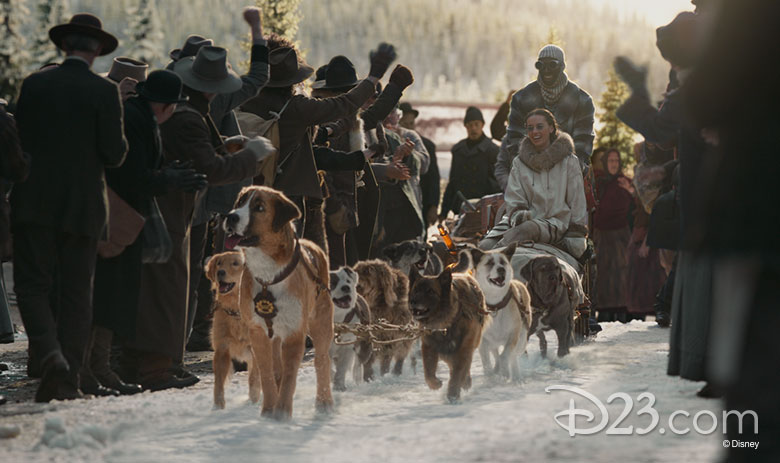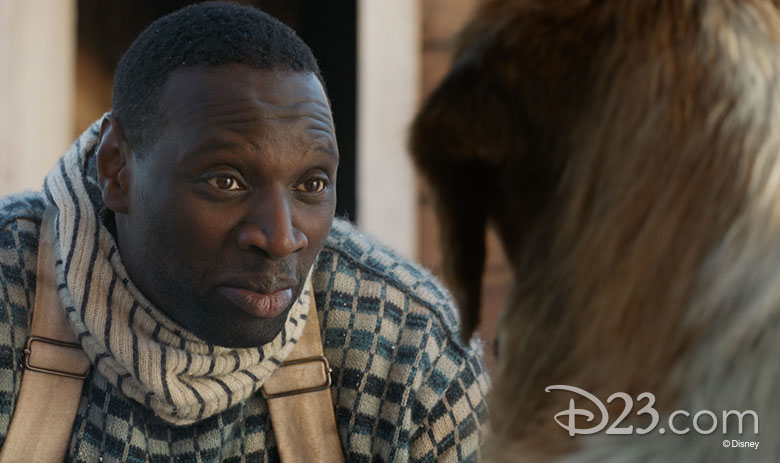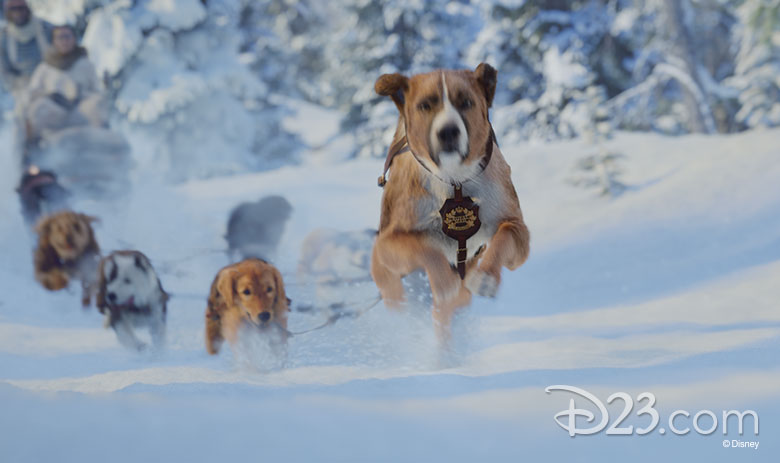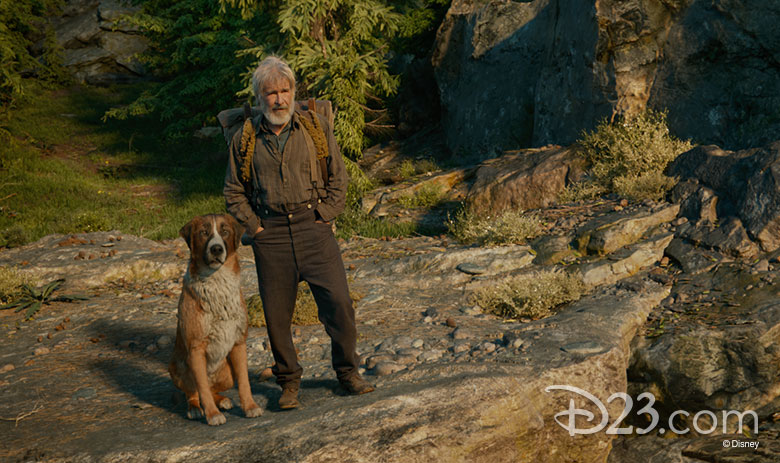By Zach Johnson
In many ways, Harrison Ford and John Thornton are one and the same. “That’s the edited me,” Ford says of his character in Twentieth Century Studios’ latest adventure, The Call of the Wild, opening in theaters February 21. “That’s curated aspects of my personality, my understanding, my conviction. That’s not always what you’re getting in the portrayal of a character, but happily, that’s the fit in this case. And it fits like a glove.”
Ford leads an all-star ensemble that includes Omar Sy (Perrault), Cara Gee (Francoise), Dan Stevens (Hal), Bradley Whitford (Judge Miller), Michael Horse (Edenshaw), Karen Gillan (Mercedes), and Colin Woodell (Charles). The Call of the Wild, adapted from Jack London’s classic novel, follows Buck, a big-hearted dog whose idyllic domestic life is turned upside down when he is suddenly relocated from his California home to the exotic wilds of the Canadian Yukon during the 1890s Gold Rush.

Terry Notary did the live-action reference performance for Buck, who was digitally animated onscreen. “We had no ‘dog’ in the movie, but we had a wonderful actor and former Cirque du Soleil gymnast who was an emotional presence for me to relate to,” Ford says of Notary. “To have him there, to be able to scratch him behind the ear and rub his shoulders… that seemed a little weird at first. But we got over it. Or I got over it.”
Director Chris Sanders, who previously created and voiced Stitch in the beloved 2002 Disney film Lilo & Stitch, says the combination of live-action performance and computer-generated imagery makes for a “fairly magical” experience. Still, he admits, “My great fear about doing live-action—and I had stayed up nights thinking about it—was, ‘What if we do a scene and a week later I realized I forgot part of it?’ But my producers assured me, ‘That won’t happen, and we’ll all be there to make sure you don’t forget something.’”
It helped that they filmed on practical sets in Santa Clarita, California, Ford adds. “That was of great value to the actors and to the telling of the story. Because we weren’t in the Yukon, we could then add the Yukon above the first story, which was the practical set. It gave us artistic opportunities we would have had a very hard time getting,” he said. “I was very pleased with how it turned out.”

Filming that way also allowed the actors to stretch their imaginations. In one scene, for example, Buck is leading a team of sled dogs—and Perrault and Francoise—when an avalanche strikes. In reality, Gee recalls, “We shot that in a studio inside. Omar and I were sitting on a sled that was in the middle of a room with nothing around us. The director would say, ‘Now you’re going around a corner,’ so we’d be like, ‘Woah!’ It’s all pretend—all imagination. I was like anyone else in the audience watching it for the first time, like, ‘Oh! That’s what it looks like!’ It was very, very challenging and very cool.” In the case of the avalanche, Sanders adds, “There’s no way you can really describe the scale of it, so they just had to do that themselves and fill that in. They did a great job.”
Another example of movie magic comes when Francoise falls through a sheet of ice and nearly drowns. In preparation for the daring scene, Gee became a certified scuba instructor. “It was a really physically demanding acting role, for sure,” she says. “We were filming in a shipping container full of water. It was really hot out when we shot that scene. The water was actually really refreshing—and in fact, when we wrapped for the day, Omar took off his microphone and jumped in the water because it was so hot out!”

While there are plenty of bold action sequences in The Call of the Wild, at its heart, this is a story about resilience. “The human spirit is often indomitable, and I take that to be a gift of nature or of God,” Ford explains. “For me, they’re the same thing.” To illustrate that, the screenwriters “took some liberties” with his character, giving him a more well-defined backstory that mirrors Buck’s journey. “As Buck was gaining the confidence and the courage to face his natural self, Thornton was finding the courage to go back and face a life he had run away from, and I think that was an important emotional element.”
In a similar vein, The Call of the Wild also touches on the seasonality of some relationships. “This is an interesting study in how chance encounters can change your trajectory,” Sanders explains. “Different people mean different things to Buck. For example, Thornton is like a father to Buck, so he has a more intimate relationship to him. In fact, at one point he says, ‘I’m not your owner!’ Perrault is more like a teacher. Perrault teaches him a trade and teaches him to grow up. He gives him responsibility and believes that he can do these things. Later on, you look at the journey you’ve had and you wonder, ‘What if this chance encounter hadn’t happened? Where would I be now?’”
The Call of the Wild is in theaters Friday.




